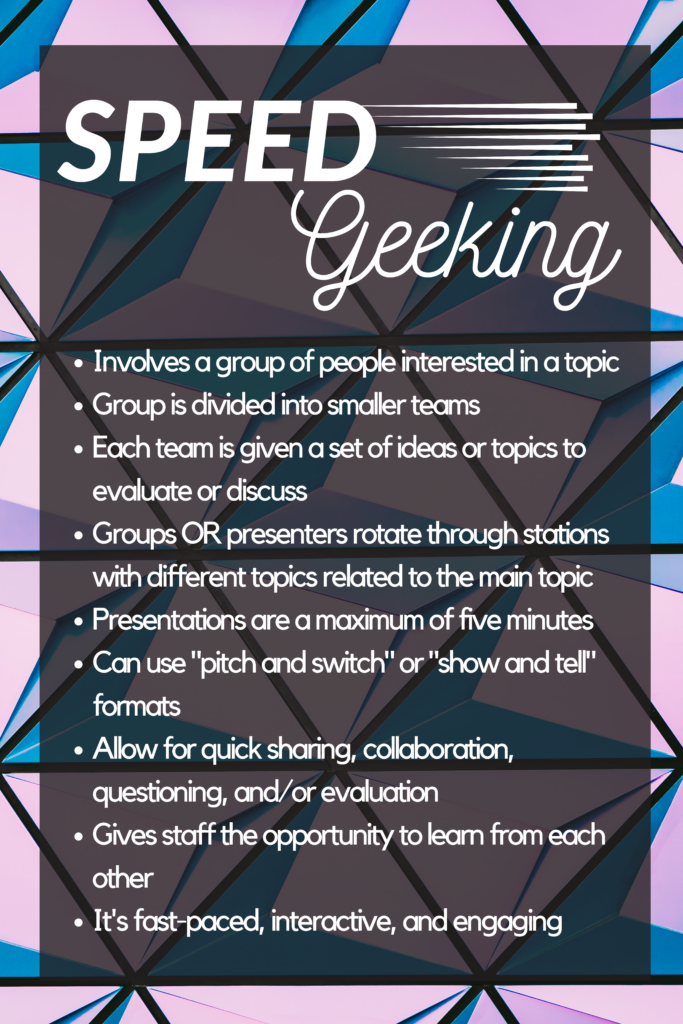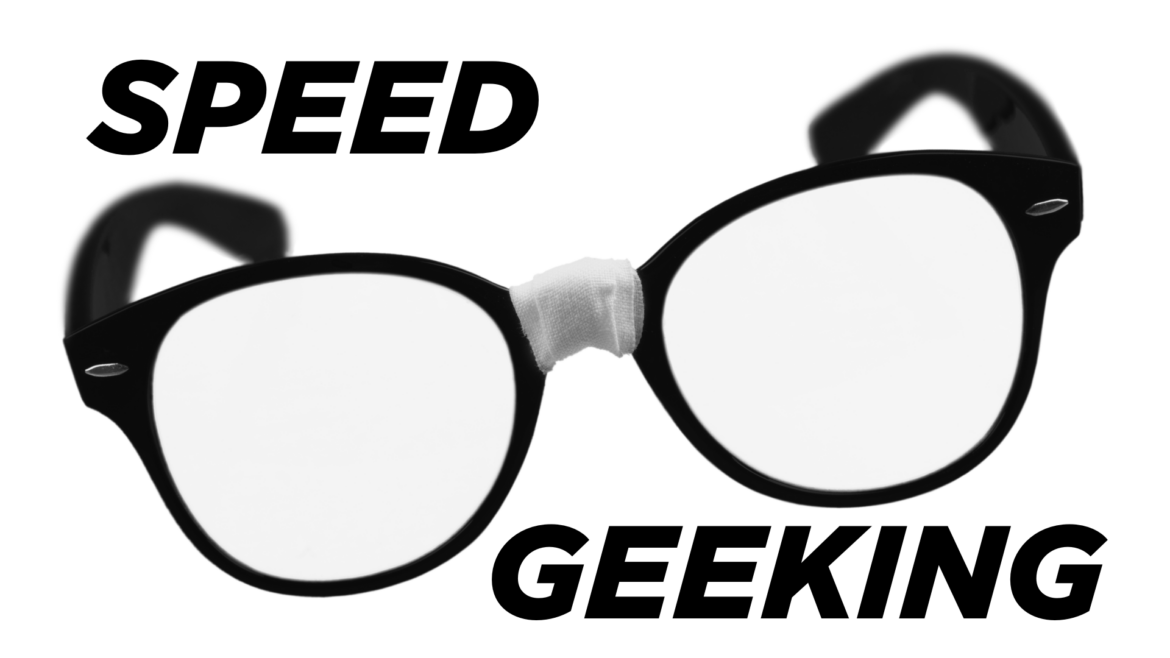Speed Geeking: A High-Impact Professional Learning Strategy
Looking for a fast, engaging way to deliver professional development? Speed geeking is a rapid-fire strategy that exposes staff to a variety of instructional tools, tech platforms, or teaching strategies–in just minutes. It’s ideal for faculty meetings, PLCs, or campus PD sessions where time is short but energy and engagement are key.
What Is Speed Geeking for Educators?
In a speed geeking session, educators rotate through a series of stations. They’ll absorb and evaluate brief, focused presentations (typically 3-5 minutes) delivered by peers or instructional leaders. Presenters share a tool, technique, or idea while participants listen, ask questions, and gather insights. This format maximizes exposure to multiple topics, promotes peer learning, and creates space for follow-up conversations later.
Formats for Speed Geeking
There are several effective formats for using speed geeking with educators. Each one offers a slightly different structure while keeping the focus on fast-paced, peer-driven professional learning.
Popular formats include:
- Pitch and Switch: In this format, each participant gives a short “pitch” (usually 3-5 minutes) about a tool, instructional strategy, or idea. After each round, participants rotate to the next presenter. It’s quick, energetic, and perfect for sharing multiple ideas in a short time.
- Show and Tell: Instead of pitching, presenters demonstrate a tool or technique while others watch, ask questions, and engage. This hands-on approach works well for tech tools, classroom strategies, or modeling instructional practices.
- Station Rotation (Presenter Stays): Educators rotate through stations while presenters remain at fixed locations. This works well in large spaces or when you want small groups to interact with consistent presenters.
- Presenter Rotation (Participants Stay): Participants remain seated while presenters rotate between groups. This is a great option if you’re working with limited space or time and want the content to come to the learners.
Each of these formats supports active learning, collaboration, and quick exposure to a variety of professional learning topics–all without overwhelming your staff.

Why Is Speed Geeking Valuable?
Speed geeking is particularly effective in K-12 schools because it promotes teacher collaboration, peer-to-peer learning, and exposure to diverse instructional practices–all within a compressed time frame.
For school leaders, this format offers a way to deliver high-impact professional development without requiring extended time blocks. It’s ideal for faculty meetings, in-service days, or PLC sessions, especially when you want to maximize engagement while introducing multiple topics or initiatives.
By giving educators a platform to share their own expertise, speed geeking also fosters a culture of instructional leadership and staff empowerment.
How Does This Apply to Faculty Meetings?
Let’s be honest. Traditional faculty meetings can feel like information dumps. If your staff is tuning out, it’s time to rethink the format.
Speed geeking offers a structured, time-efficient, and engaging alternative. Whether you focus on instructional strategies, tech tools, campus goals, or even SEL approaches, this format ensure that teachers are actively participating–not just listening.
Because presentations are brief (shouldn’t be more than 5 minutes), educators can absorb new ideas quickly, ask targeted questions, and follow up later for deeper learning. You can even align the topics with district initiatives or teacher-led interests to boost relevance.
Looking for a way to re-energize your PD? This just might be it.
Want More Creative PD Strategies?
Explore additional ideas for interactive, research-backed professional learning:
Pineapple Charts: Learning from Your Peers
Human Bingo: A Fun and Effective Icebreaker
Enhance Your Skills with Chromebook Bingo
The Solo Cup Engineering Challenge
Gratitude Towers for Social Awareness and STEM
Leveraging Interactive Agendas for Enhanced Collaboration in PLCs
Learning More About Yourself with the AI Personality Test

